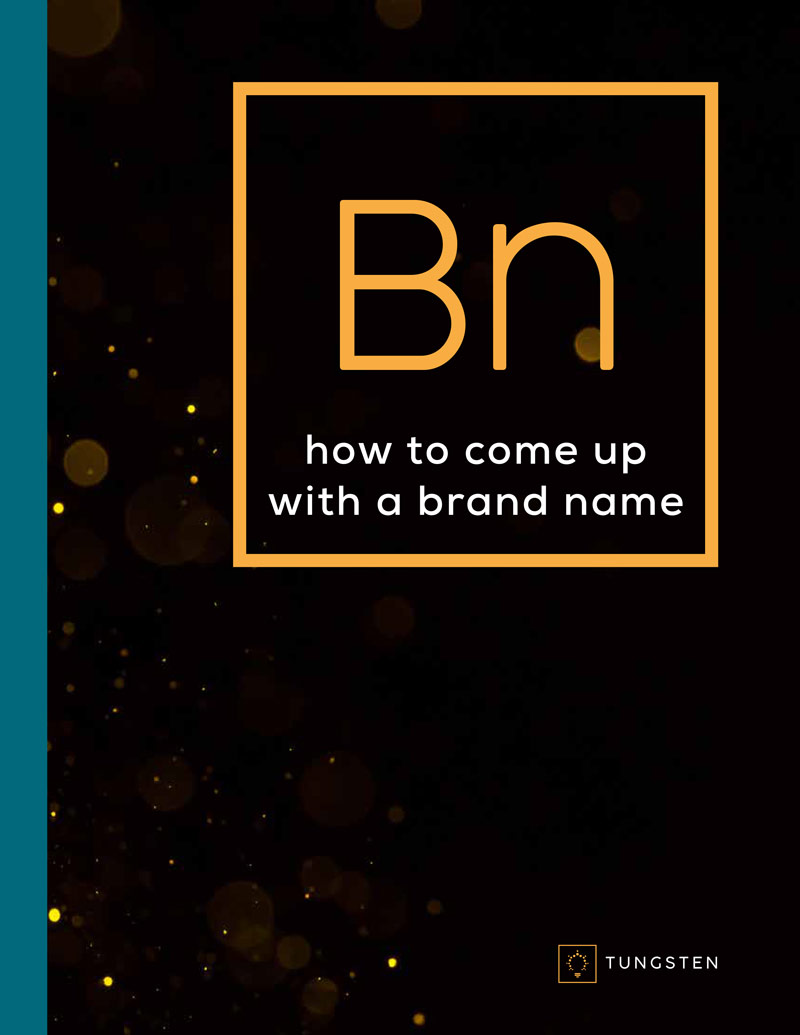6 Steps for Finding the Perfect Brand Name for Your Business, Product, or Service
So you’ve come up with a new business concept, a new product line, or a professional service. Now you’ve got to figure out how to come up with a brand name. At this point, you’ve mastered the hard parts, e.g. the business model, technology, logistics, hiring, sales, and distribution, etc. Creating the ideal company or product name should be the easy part—right?
Like most business owners, you’ve probably brainstormed hundreds of company name ideas. You’ve looked up obscure words in Latin and Sanskrit, used your kids or partner’s initials, and welded together horrible mashups. Then you ran the gauntlet of trademark and domain availability. You even opened it up to employee suggestions or an internal contest. (Yikes!) How did that go? With the clock ticking until your next trade show, that meeting with a key investor or big potential client, you’re now at your wit’s end. Don’t fear, you’re not alone.
According to The 2017 Kauffman Index of Startup Activity report, there are 540,000 new business owners each month launching new business startups. And that’s not counting naming new products, services, and divisions, or rebranding existing businesses.
A good brand name starts a conversation… and invites further inquiry
Naming a business, product, or service—using best practices and doing it right—is part art, part science, and part gut instinct. If done right, a good brand name starts a conversation. It creates interest and invites further inquiry. A good brand name segues easily to your core value proposition: what you do best when you’re at your best. A good brand name allows for continual growth and expansion without being defined by geography, outdated or inaccurate services (e.g. Radio Shack), and meaningless acronyms or last names. A great brand name actually helps you by providing a bridge between the introduction and the explanation. It’s intuitive, inviting, and fitting.
But just how and where do these great company and product brand names come from? What are the steps to get there? Below are proven strategies on how to come up with a brand name—the perfect brand name, the one that works best for you.
Determine Your Brand’s True Purpose
Most startups, in a rush to get to market, (or established companies in an effort to rebrand an outdated name,) attempt to define themselves by what they do or where they do it. They create product or service-identified names that sound functional, “tool-ish,” and geographically bound. They become the CompUSA’s and Burlington Coat Factories of the world. The fear is the customer “won’t get it,” and that the name must spell out everything from the products, to the city of origin, to the owner’s name. The exact opposite is true.
Brand clarity comes from the inside out. Start with taking inventory of your strengths, attributes, and skillsets as a company. Define yourself by looking at the benefits you deliver, the positive outcomes you provide as a result of your products and services. Imagine if Steve Jobs had named his company Global Computer Makers or Jeff Bezos had christened his startup Online Books Unlimited. Both names would have been fitting and arguably more accurate at the start but would’ve quickly bottlenecked the companies.
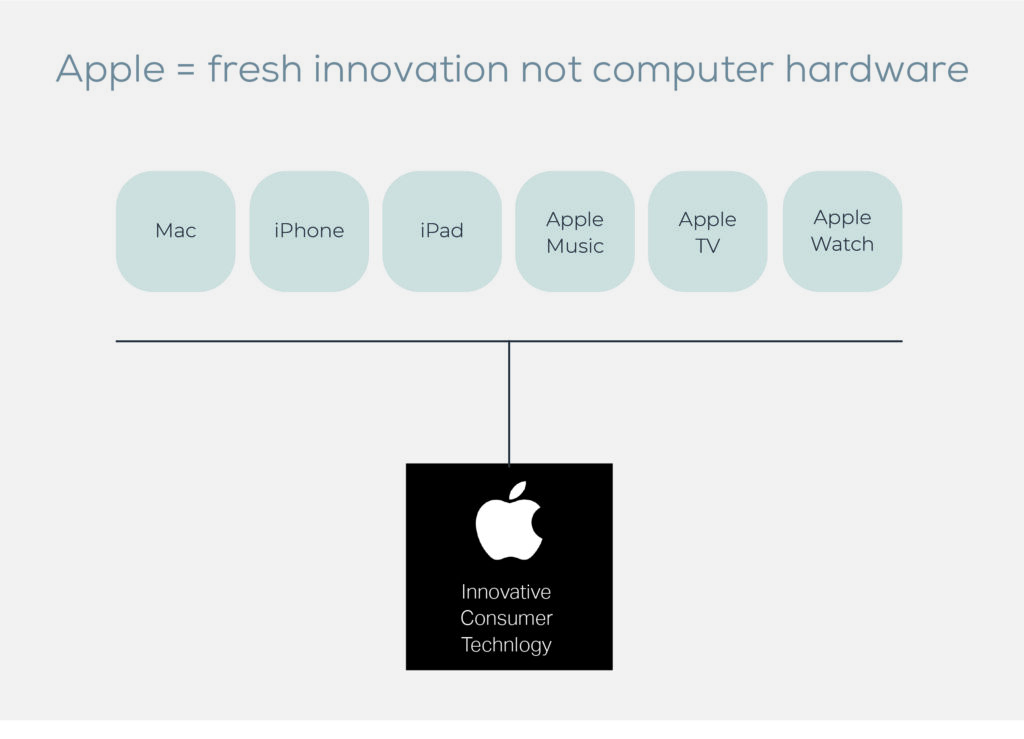
For example, when I went to create our own company name, I wanted to help companies find clarity. Even though we are considered a “naming firm,” I resisted using the word naming in our brand name. I found that most clients truly want clarity. They want to get their story straight and have a company name that shines. With that, I created Tungsten, based on the wire in the light bulb. A naming service is a commodity; a provider of clarity and insight is priceless.
Brand clarity comes from the inside out, not the outside in.
What’s your company or product’s reason-for-being? What are you doing when you do your best work with your best clients? Are you innovating? Problem-solving? Are you providing comfort and reassurance? Maybe you’re guarding and protecting. Or perhaps you’re providing speed and efficiency. By anchoring your company and/or product identity to timeless attributes, you stand a better chance of creating a meaningful, valuable, and long-lasting brand name.
We call this “why” your pivot point, the unique set of skills and abilities around which your goods and services revolve. This is why so many businesses evolve and outgrow their original identities: the same success formula that got them started translates into new ideas, products, and initiatives. They outgrow the original bucket they put themselves in and now need a bigger one.
A question we often ask is, “If your company or product name could only convey one thing, what would it be?” This is a tough question; you have to make tough choices. You have to distill your company down to its essence—the pure maple syrup of what makes you you. And it’s probably not a product. For us it’s clarity. For you, it’s going to be something just as important, unique, and compelling. It could be freedom, safety, trust, confidence, empowerment, growth, comfort, connection, etc. Find your “it” and make it your guiding light, your pivot point. You’ll be off to a great start in how to come up with a brand name.
Determine Your Brand Criteria
Now you have a clear understanding of your brand’s true purpose: the end benefit you provide to your customer. The next step in how to come up with a brand name is to think of the “ingredients” that go into your recipe. It may be a combination of quality and efficiency, friendliness and service, or precision and dedication. Every company, every product, and every service has (or should have) a formula that delivers desired results. And the brand name should, in some way, reflect that formula in order of importance.
This is why it’s so important to know your brand’s true purpose. That’s what comprises the “tip of the spear.” Determine your main ingredient, but identify the other ones also. Target department stores are known for low prices with a touch of style. They’re “on target” and “on point” when it comes to providing value with aesthetic appeal.
What’s important here is making up that list of ingredients, and most importantly, putting them in order. Every recipe, including Colonel Sander’s “secret” recipe, has a list of items in proportion. And knowing which ones are the main ingredients will keep you from naming your company or product with an ingredient that’s way down the list. I see this all the time. Business owners or C-suite staff disagree on a brand’s main value driver, then name it based on something remotely connected or several degrees removed just to appease the group. The end product is a name that seems trite, disconnected, and disingenuous.
Does “quality” represent the driving passion of Quality Inn?
Is “farming” the central theme for Farmers Insurance?
Is “Two Guys And A Truck” the core message for a professional moving company?
So have a list of what you want your brand name to convey most, followed in order by what you want to convey second-most, and so on. It’ll help you in the steps ahead to evaluate brand names and sort the ones that resonate from those that ring hollow. Include in this list other characteristics that you want the brand to communicate. For example, if you’re bringing something new to the market, you may want a name that’s disruptive and doesn’t follow the normal naming conventions in your industry. If you’re in the financial field, you might want a name that sounds proven and trustworthy. If you’re a web-based e-commerce company, you may want/need an exact matching .com domain name that’s short and memorable. Below is an example of a branding criteria list for an imaginary cloud storage startup company.
example naming criteria for a cloud storage company |
|---|
| Convey size and scale |
| Be short and compact for ease of use |
| Communicate strength and reliability |
| Be easy to pronounce and spell |
| Have the available .com domain name |
| Be unique and memorable |
| Have a brand story/rationale |
With this list in hand, you can proceed to the actual brainstorming and brand name generation with an objective tool to help evaluate each naming candidate. Without it, the naming process devolves into subjectivity, visceral “gut” reactions, and “tail-wagging-the-dog” syndrome. This is how low priority items take precedence over everything else.
Let’s jump back to the above example of the fictional IT company. Without the brand criteria list, someone might hit on a unique and memorable brand name (priority #6) but without any connection to the primary objective (conveys size and scale.) This lower-level item becomes the tiebreaker, and the company or product ends up with a unique and memorable name like Pink Swordfish at the expense of the main goal. So yes, make a brand criteria list—and check it twice. You may need to adjust and re-prioritize as you continue processing how to come up with a brand name, but at least you’ll have something to guide you as you move forward.
Determine Your Naming Strategy
Now you have a sense of what you want your company name to convey (your pivot point) and your brand criteria (your secret brand recipe). For the next step in how to come up with a brand name, the task shifts to the actual naming. Here’s where we get down into the brass tacks of naming conventions and naming strategies.
There are a number of effective strategies, each with its own set of benefits and drawbacks. Naming and branding firms worldwide have attempted to devise the definitive naming taxonomy, and that’s not our purpose. Our goal is to provide proven expert methods to expand your thinking and provide new ways to come up with a brand name. Here are the ten naming strategies we’ve developed in creating great brand names.
Evergreen & Positive Connotation NamesThis is one of our favorite naming strategies because it provides your brand with a head start. As the name implies, evergreen brands come pre-imbued with meaning and associations, ones that should mirror your brand attributes. The appeal of evergreen names is that they possess a timelessness to them that prevents them from going out of date or being subject to naming trends. |
|---|
| Companies Tungsten has branded using this strategy: |
| Starmark AcademyA pet toy manufacturer & dog training company |
| TeamLogicITAn international business technology franchise |
| BrightPath MortgageA home mortgage and financial services firm |
| KeySpringA dental insurance filing platform for unlocking information |
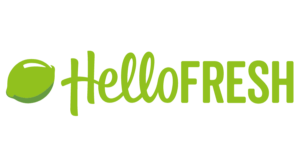

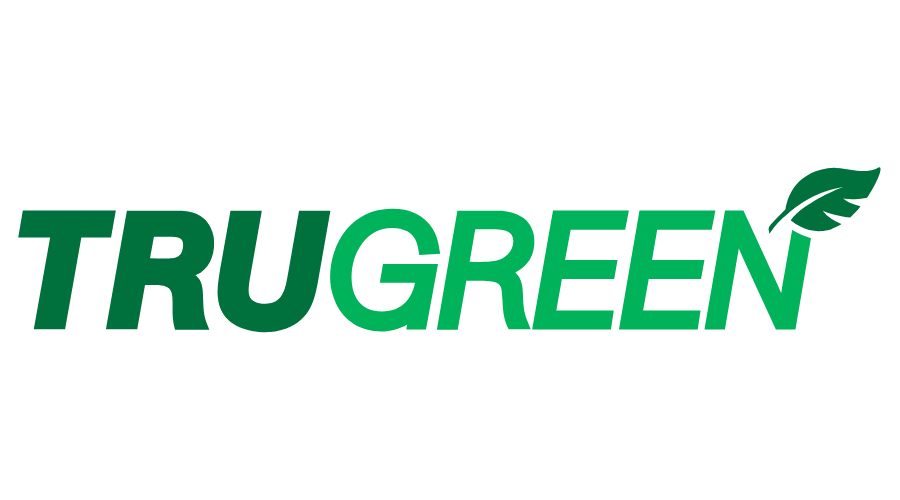
Coined & Invented NamesThese are sometimes referred to as “empty vessel” names, in that invented names often have little to no meaning. Old school examples are Xerox and Kodak. More recent examples are Skype, Venmo, and Voya. This naming strategy makes sense when your business model is in a state of flux or you are growing and expanding in a number of different directions. The disadvantage is that you will have to spend marketing dollars to imbue meaning into your company name. It took years for Xerox to become synonymous with copiers and for Kodak to mean cameras. Not all created names are created equal. While they are referred to as empty vessel names, it’s best to give coined names a hint of meaning by including a morpheme, or word part, that indicates some aspect or feature of the business. |
|---|
| Companies Tungsten has branded using this strategy: |
| RivionAn environmental sustainability consultancy |
| BrilliumA data platform for gaining human insights |
| RevecentA sales training and lead generation firm |
| BellesomaA cosmetic enhancement procedure |

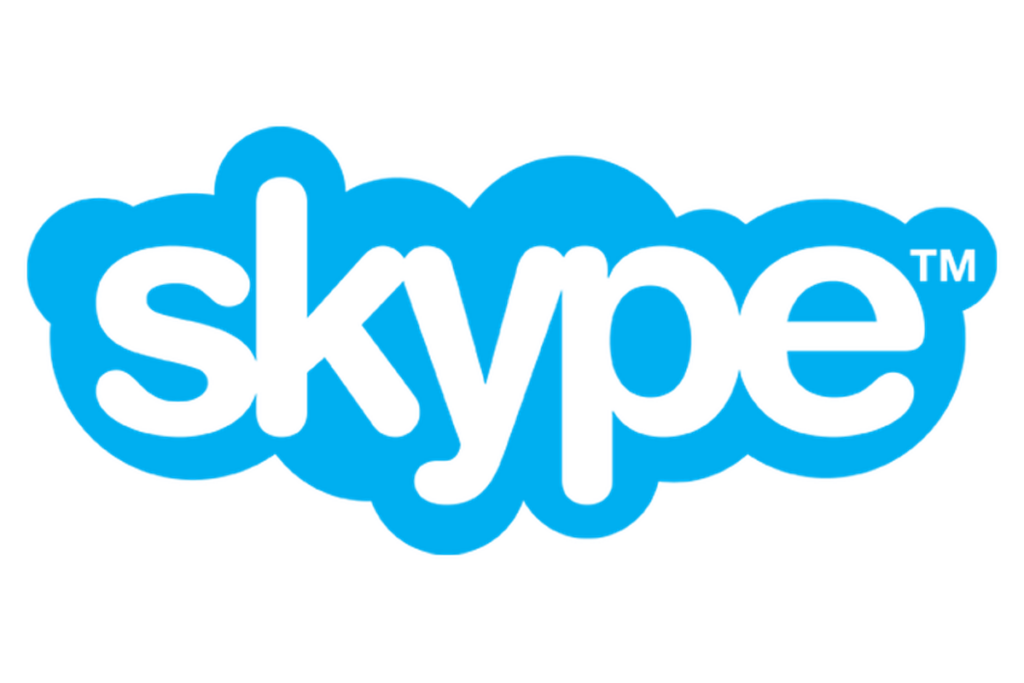

Metaphorical NamesIf a picture is worth a thousand words, a metaphor name can save you a LOT of explaining. By using a metaphor, you are aligning the qualities and attributes of a person, place, or thing to communicate your brand message. Amazon is a great example of a metaphor name. Rather than embedding the word “books” in the name (their original product offering) Amazon chose a name that speaks to a wide, diverse e-commerce channel that streams goods and services worldwide. Kayak, the travel site, is another good metaphor for moving from place to place. |
|---|
| Companies Tungsten has branded using this strategy: |
| Triple20A sales consultancy that targets superior results |
| Canary InsightsA medical reimbursement warning technology |
| GrayArmorA commercial/industrial piping installation firm |
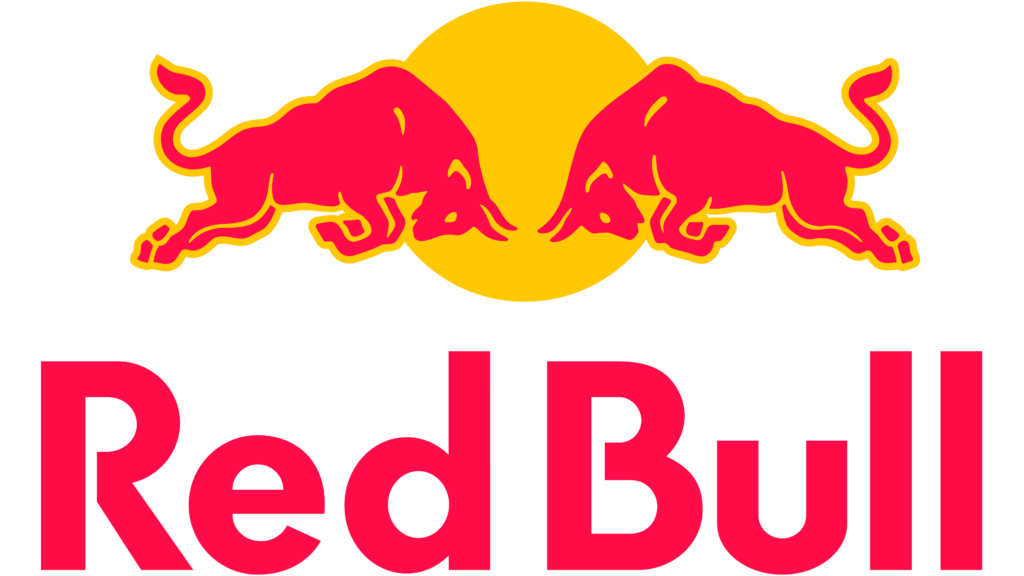

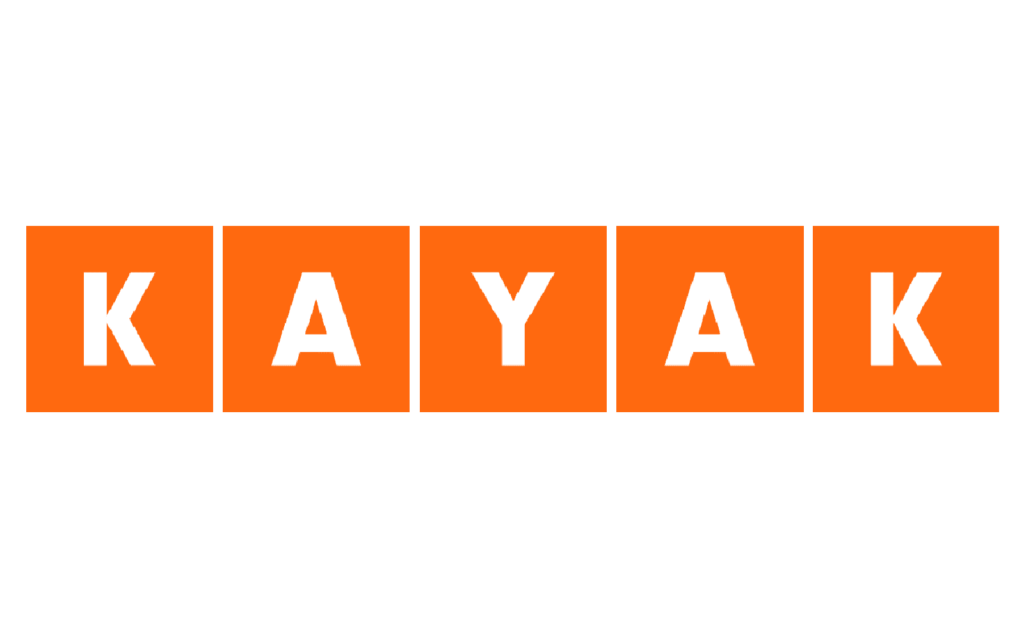
Descriptive Evocative NamesThese types of company names combine a more literal industry word with an evocative or aspirational word. In some sense, it’s having your branding cake and eating it too. The cautionary tale here, as with any descriptive based name, is to ensure you will always remain in that category. These names are not wildly imaginative but they do provide a touch of emotion to give the brand a sense of personality. |
|---|
| Companies Tungsten has branded using this strategy: |
| CollegeSpringA nonprofit, college entrance and training agency |
| BrainSpaA comprehensive brain health services platform |
| DriveSparkA car enthusiast site based in India |
| SodStarAn agricultural logistics supply company |

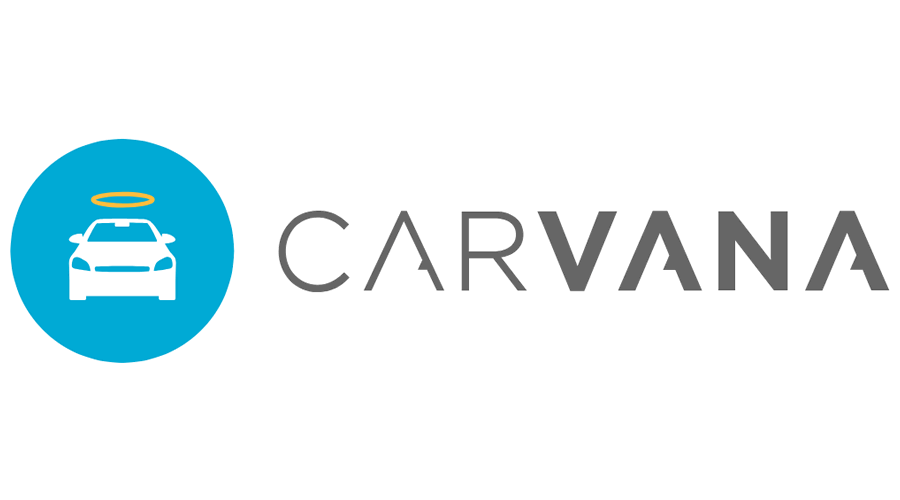

Descriptive Benefit NamesIf your company, product, or service stakes its claim on one key attribute (one that will always remain as a core value) then you can come up with a brand name based on that singular ability. Again, it’s important to go through the first exercise in this article to make sure this benefit is mission-critical to your company’s purpose. These names typically involve an industry indicator or descriptor with an adjective. |
|---|
| Companies Tungsten has branded using this strategy: |
| EvergrateA durable drainage system for commercial application |
| Fresh CommerceA logistical IT platform for shipping produce |
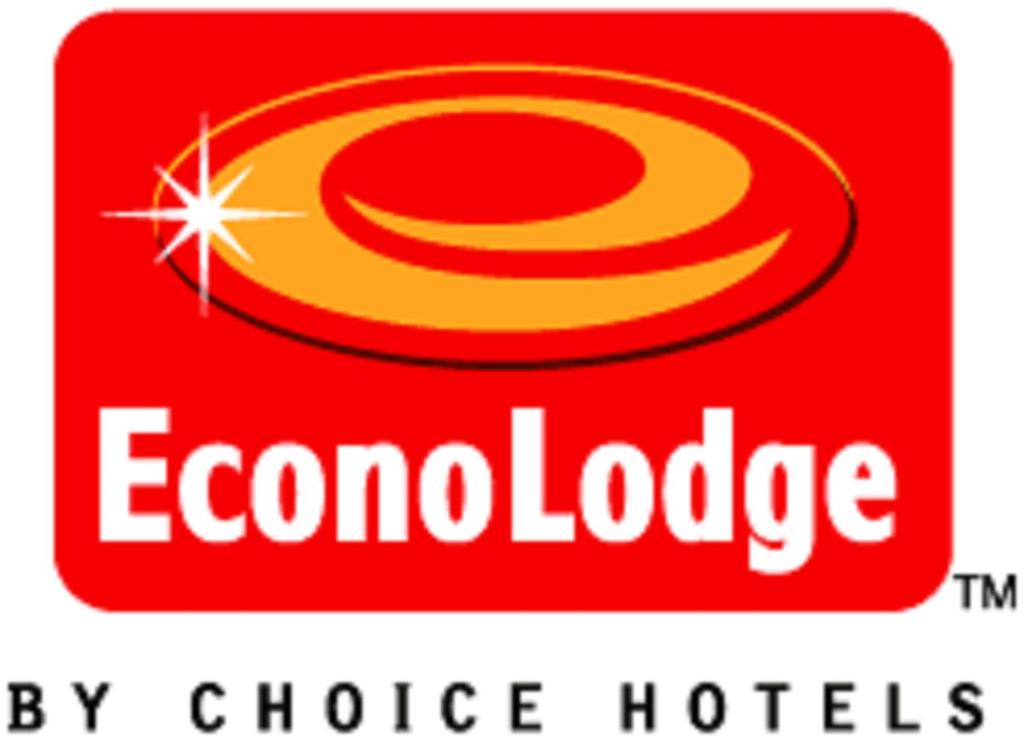

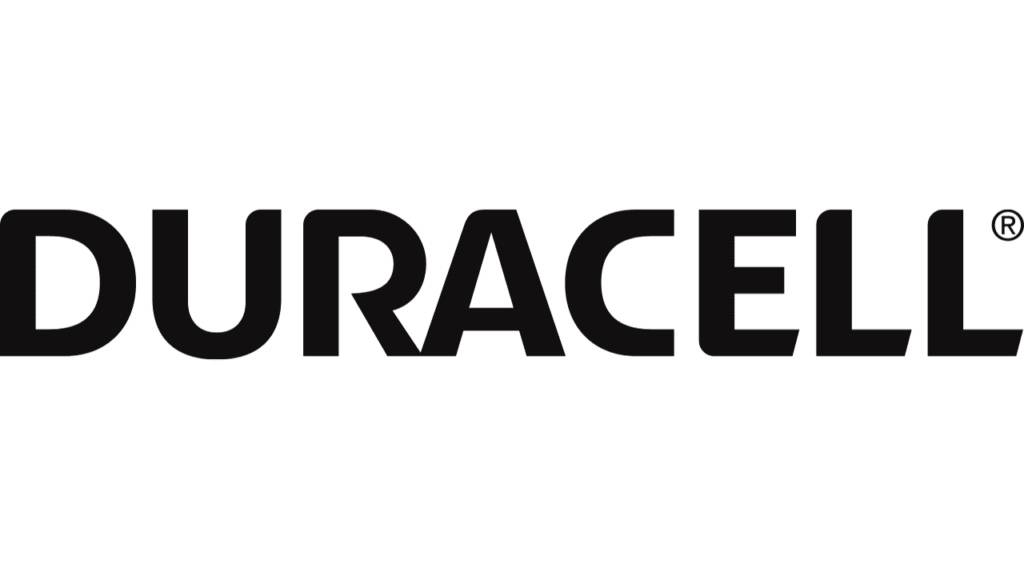
Descriptive Mashup NamesThis is perhaps the most popular naming strategy clients use when coming up with names internally. The natural inclination is to take descriptive words and mash them up with various adjectives. Unlike Descriptive Evocative names and Descriptive Benefit names, these brand names are actually truncated and “welded” together. If done correctly they can be intuitive and masterful. If done poorly, they sound like the train wrecks they are — forcefully collided together. So choose your words wisely when you come up with a brand name such as these. |
|---|
| Companies Tungsten has branded using this strategy: |
| EnvocoreEnvironmental and core infrastructure renovation firm |
| DayscapeAn all-day escape for parents and children to enjoy |
| PolyvanceA manufacturer of advanced, innovative polymers |

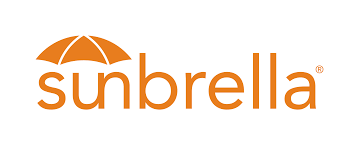
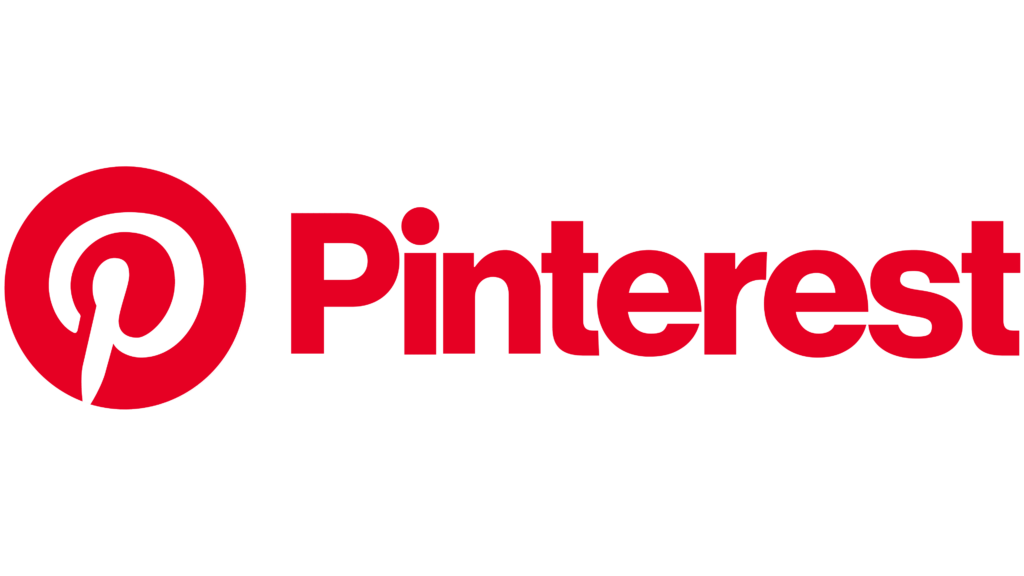
Evocative NamesEvocative names as implied, evoke or elicit an emotional, cognitive and/or visceral response. They communicate through osmosis vs. a direct description of the products and services. When we came up with a brand name for a children’s book portal, we used the evocative naming strategy by calling it Early Moments, with the tagline “Sharing the gift of reading.” The name highlighted the benefit of parent bonding time vs. the literal functionality of the site: selling kids books online. The original name, Reador, was scheduled to be the more literal and less emotional. |
|---|
| Companies Tungsten has branded using this strategy: |
| Early MomentsChildren’s book portal |
| Bright Eyes UgandaNon-profit with a mission to help bring hope and help to disadvantaged children in rural communities |
| Guardian AngelMaternity health & wellness program |
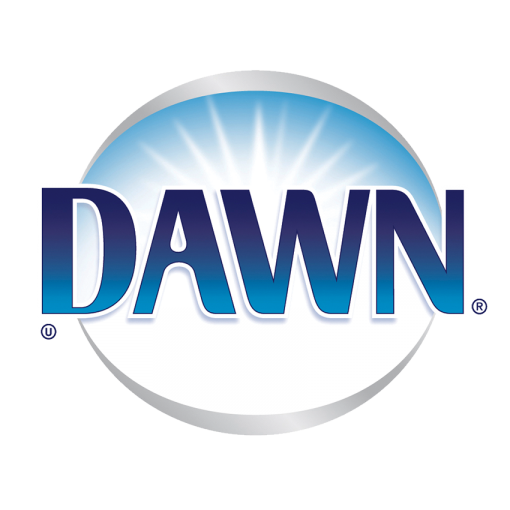
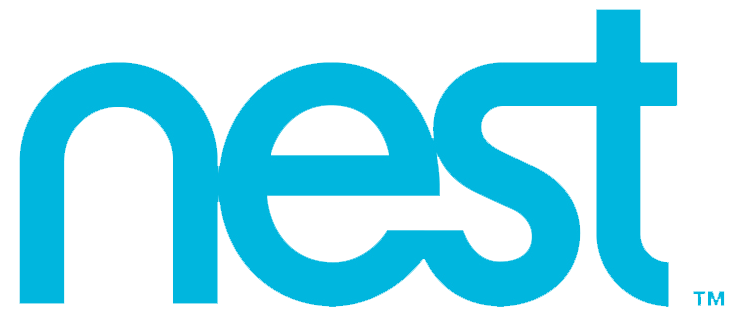
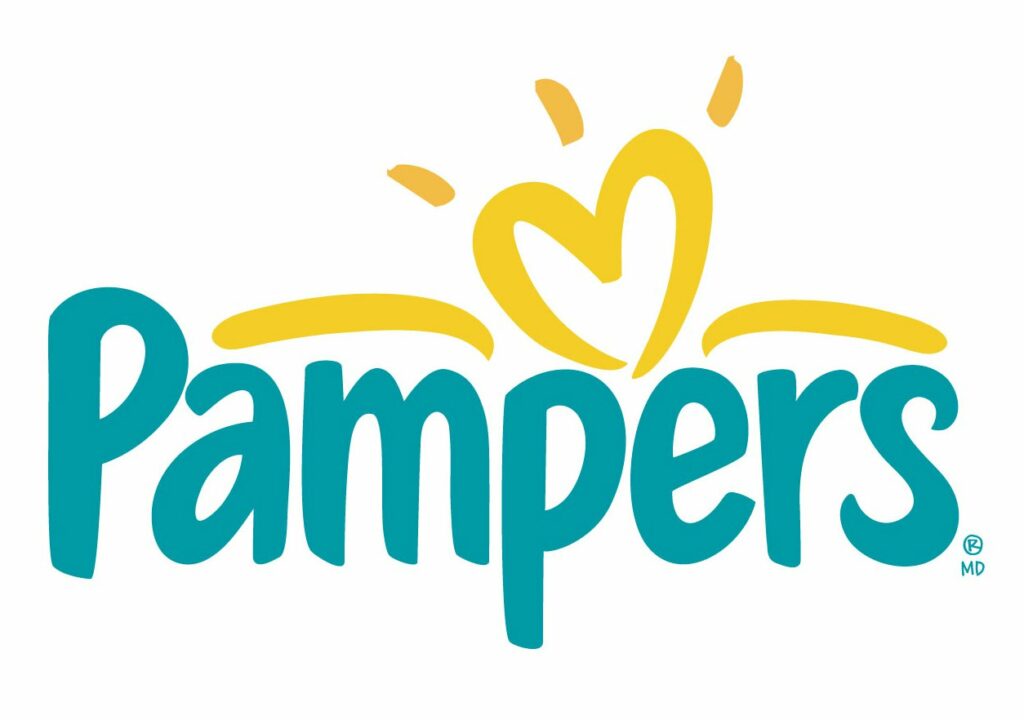
Key Attribute NamesKey attributes brand names differ from Descriptive Benefit names in that they focus entirely on the main value proposition of the product or company with no hint or reference to the industry. The thing to keep in mind is that you will always be tied to this attribute, whether it’s speed, durability, longevity, price, etc. So just be sure the attribute is central to your brand’s current and future product and service lines. |
|---|
| Companies Tungsten has branded using this strategy: |
| CermountNonprofit helping clients overcome barriers to employment |
| Progresso Capital PartnersInnovative financial services company |
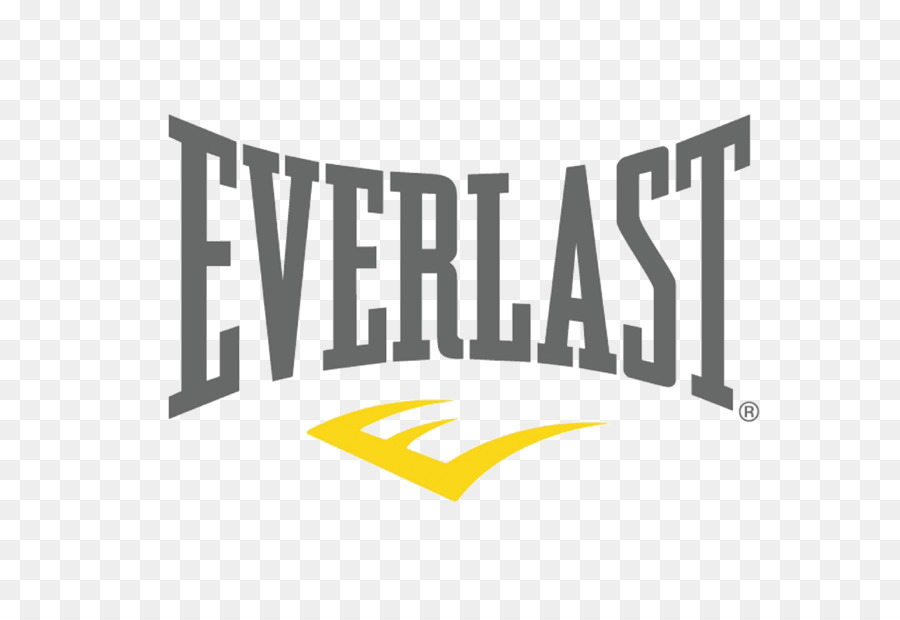
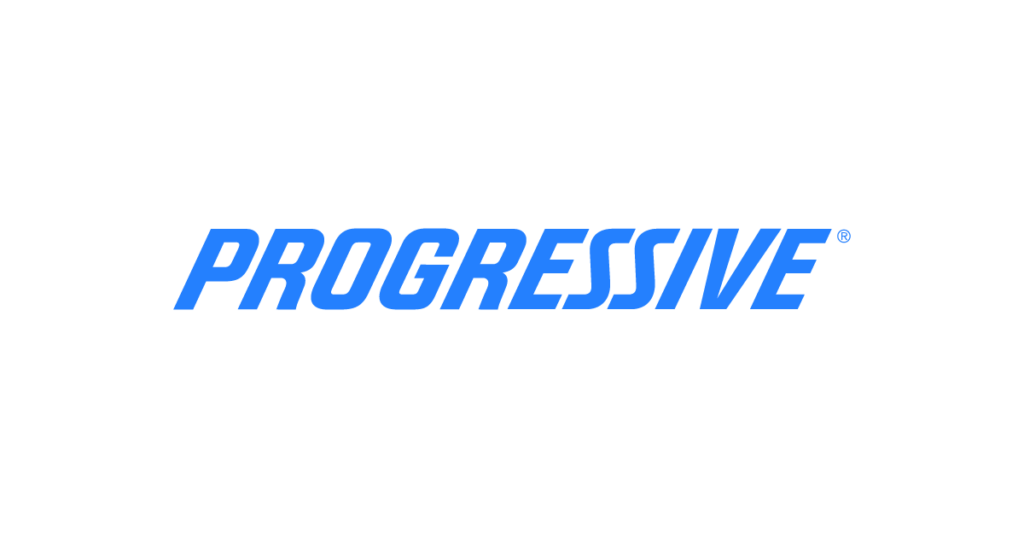
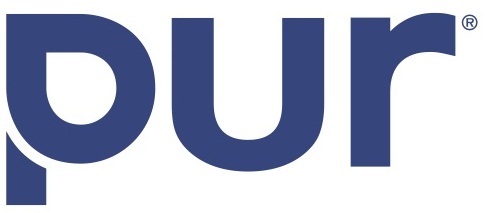
Strategic Positioning NamesStrategic positioning names are just what they imply, names that clearly state the leadership role that the company occupies in its industry. |
|---|
| Companies Tungsten has branded using this strategy: |
| StreetKingA custom wheels and rims retailer |
| KoreOneA mission-critical staffing company |
| MaxAvenueA champion for buyers, sellers, & real estate investors |
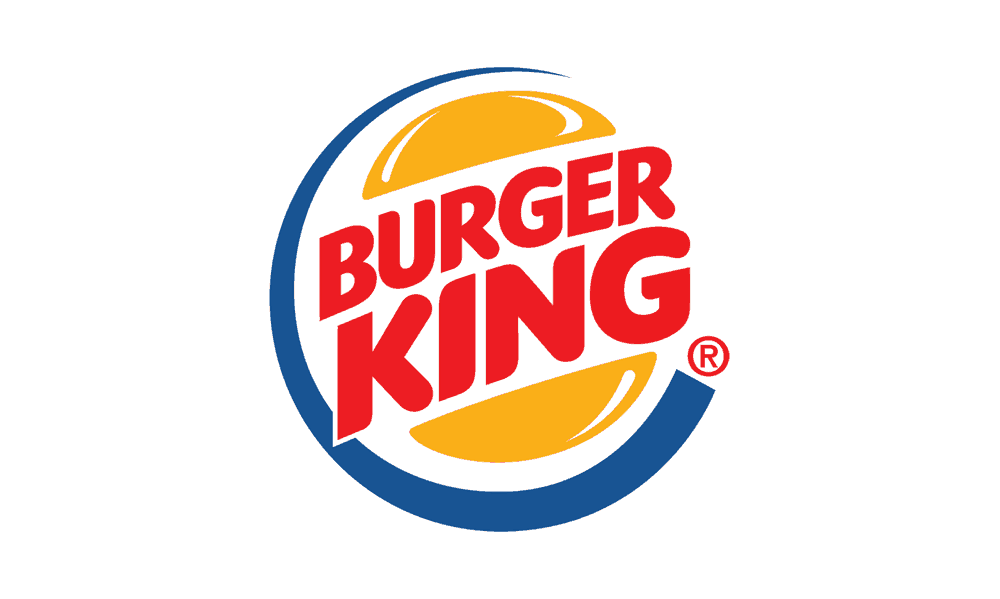

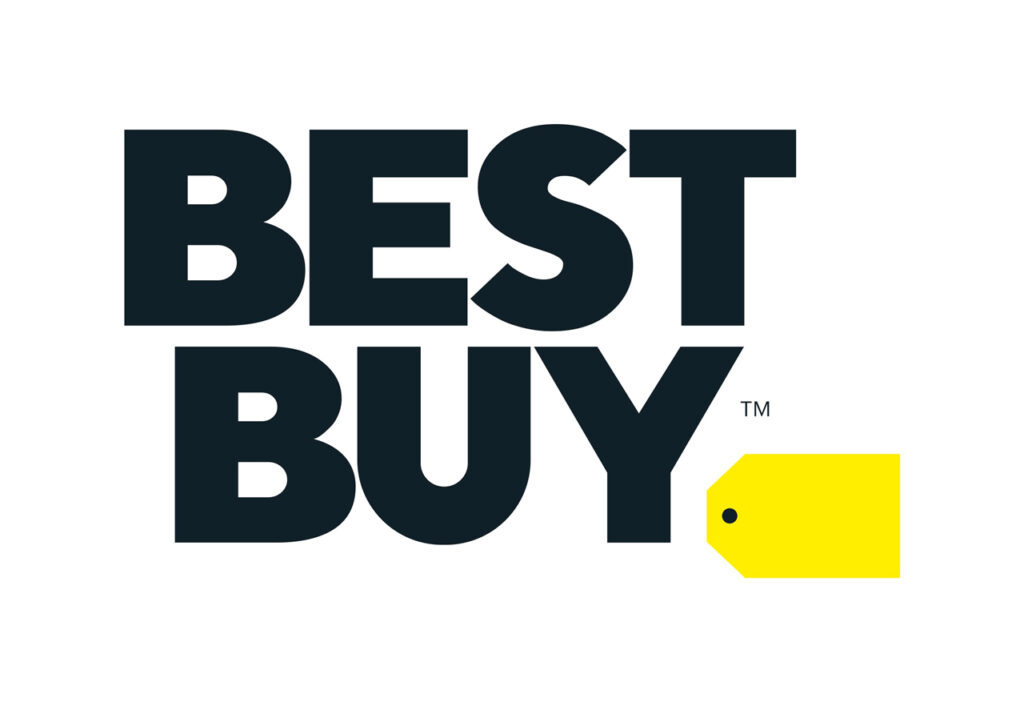
Disruptive NamesThese types of names are great for brands and businesses that are first in category or want to make a statement. These names are deliberately different, obtuse, perpendicular and even pejorative in nature. Apple is an example of this type of naming strategy. It’s a stretch to say that a computer or iPhone is like an apple, so it’s not a metaphor name. The main purpose is to say “Take a look at us, we aren’t doing business as usual.” If you use this approach be sure that your products or services live up to the name. If you attract everyone’s attention, you then have to meet the heightened curiosity and expectations that these types of names demand. |
|---|
| The best example we’ve created using the disruptive naming device was TKO Surgical. This brand name was a bold departure for a company in the medical space. We borrowed on the boxing term for a “technical knock out” for two reasons. First, it spoke to how the company champions the cause of their clients. Second, it delivered a knockout punch to their competition. “At TKO Surgical, out mission statement is right in our name, delivering a Technical Knock Out. In fact, we view our name as a “call-to-arms” fighting for the solvency of the healthcare industry.” |

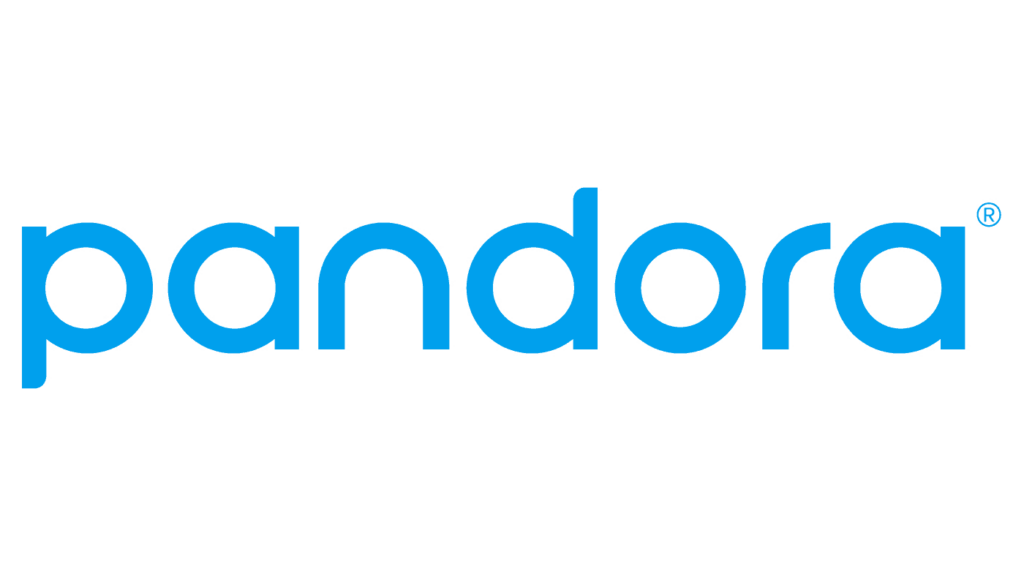
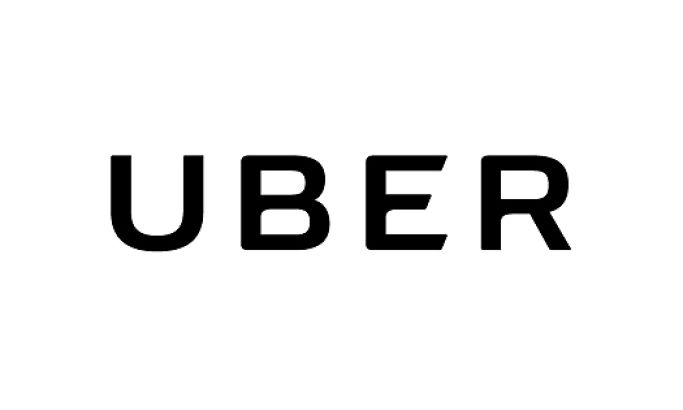
Linguistic “Icing” for Your Branding Cake
In addition to the ten company naming strategies above, the following techniques add an extra layer of “stickiness” to a name. This means they make it more interesting, memorable, and engaging. I don’t recommend using these as part of the brand criteria; that would be the tail wagging the dog, i.e. insisting that the name rhyme rather than focusing on your main brand messaging. These naming tactics are an added plus if they happen to make the final list using the above naming strategies.
Rhyming NamesPerhaps the stickiest of business brand names are the ones that rhyme. These names make for high recall and work well for brands that want to convey a friendly, fun image. They can run the risk of sounding too sing-song or flippant in nature, so think twice before applying this advice. SmugMug SlimJim |
|---|
| Companies Tungsten has branded using this strategy: |
| DotPotAll natural product borrowing on the Department of Transportation clientele |
Play-on-Words NamesThese are the trickiest of names to pull off. When done well, they are clever, catchy, and can even elicit a smile. All good things if your brand shares those attributes. These types of names would not work well for financial or medical, but they can excel in the retail space. Wells Cargo Pupperoni |
|---|
| Companies Tungsten has branded using this strategy: |
| Mt. Washmore“A Total Rush” |
| UpouriaA coffee flavoring company |
| InugoA smart parking app/technology |
| GiveBakeA nonprofit that donates profits back to the community |
Alliterative Brand NamesAlliterative brand names are more common and easier than coming up with rhymes or plays on words. They also provide a high degree of “stickiness” to the brand with a greater opportunity to find them. Coca-Cola Bed Bath & Beyond |
|---|
| Companies Tungsten has branded using this strategy: |
| CalmCoyoteA sensitive skin care company |
| ParkPlace“The ultimate garage space” |
| VimVooAn on-demand interior design service |
| Private PlusA mortgage service provider |
| Range RunnerSatellite communications |
| LoftLinksAn indoor golf simulator |
By coming up with a variety of creative approaches to your company or product naming project, you greatly increase your naming options. You also improve your choice of viable naming candidates. Some strategies will work better than others for your specific situation or industry, so don’t feel the need to employ them all. Rather than brainstorming only invented names or descriptive mashup names, you can now explore a full range of brand name ideas.
Also, feel free to mix and match these strategies to come up with even more brand names. Ones that defy traditional classification, like MailChimp and 37Signals. Again, there’s no classification system that neatly and cleanly categorizes every possible brand name. That said, these ten naming exercises should get the creative juices flowing.
Now you’re well on your way to hammering down how to come up with a brand name that truly shines.
The only thing that’s missing in these naming strategies is what we consider naming mistakes. Other marketing firms recommend “strategies” like using last names, shortening names to acronyms, and using a map to define your company. We’ve covered the naming no-nos in another article. Check it out below:
8 Mistakes To Avoid When Naming Your New Business
Pair the Brand Names With Descriptor Phrases and Taglines
Think of brand names as the leading actor in your company or product identity. The tagline is the supporting actor. Even Tom Hanks had Wilson in Castaway, right? Many times, a name that works somewhat well excels when coupled with the right supportive phrase.
Look for taglines that provide a supportive context for the name
When branding a nonprofit, university prep organization, we came up with the name CollegeSpring. The brand message and intent came into focus with the tagline “Potential Made Possible.” The metaphor of a coiled spring, full of unleashed energy, brought the whole identity piece together.
Create several potential taglines for each name to provide different “angles” on how each name could be >positioned. In the example above, we could’ve used the metaphor of “spring” as a season of the year, a source of fresh flowing water or as the coiled, energetic spring. Nike’s “Just Do It” is arguably as famous as
the parent brand and helps to underscore the brand’s aspirational nature.
Create a literal/descriptive placeholder until the name acquires meaning
When starting out, you might need both a literal descriptor phrase (e.g. Tungsten… Company Naming & Branding) as well as a tagline (“Wired for Brilliance”). The descriptor phrase is like the wood forms that are set in place while wet concrete hardens; they’re not meant to be permanent. They just support the brand name until your audience knows what you do or until you outgrow your original products and services. Apple Computers, Inc. dropped the “Computer” portion, the descriptor, several years ago. They’re now just Apple. So think of the descriptor name as your “what” and the tagline as your “how.” The goal is for the what to become so known that your brand is self-evident and you are sought after based on your why and how.
Narrow your list down to the best candidates
As obvious as this sounds, at some point, it’s time to narrow the list to a set of viable contenders. Endless brainstorming can wear out a team and leave them confused and dispirited. To determine the best names, do the following:
Compare the leading names against your original brand criteria
The naming process breaks down when it becomes subjective. Nixing names based on personal prejudices—”I had a weird uncle with a name that sounded like that”—is one example. Another would be “It sounds like a medicine” or “It sounds like a pet’s name.” Go back and revisit the list and ask, in order, if the name meets the first three or more tick boxes on your branding criteria list.
Some of our most ardent brand fans are clients who were initially lukewarm to names that hit all the marks but just didn’t “wow” them. That’s because the names were new, and it’s human nature to gravitate towards
the familiar. This is why I always recommend that clients sit with a set of names for a minimum of two to three days to let them soak in. Just like it takes time to get to know people, it takes time to get to know a new name and how it feels and plays out.
A good name doesn’t only attract attention. It communicates your core message and builds equity in your business for years to come.
Check for domain availability
For most companies, having an online presence is an absolute necessity. When deciding how to come up with a brand name, having the matching .com domain name helps strengthen the new identity and gives the brand name all the more credibility. This is especially true for e-commerce businesses. Look to see if a name is available by going to sites like WhoIs.com. If the name shows as unregistered or deleted and available, grab it. You can register domain names at GoDaddy.com or any number of providers.
If you want concierge type-service and don’t have a lot of names, consider NetworkSolutions.com. They do more hand-holding and have real people answer the phone. You can also check for domain names at GoDaddy auctions, SnapNames.com auctions, or NameJet.com auctions. Finally, you can shop on sites like BuyDomains.com, or brandable domain name sites like Brandpa.com, Brandroot.com or our own Brandzam.com.
Check for social media availability
Some businesses rely heavily on social media marketing. For them, having the matching social media names is every bit as important as having the matching .com domain. You can check availability with sites like Name Checkr or Name Check.
If you can’t find the exact matching names on all your social media platforms, concentrate on the most important ones for your business. For some, it’ll be Facebook. For others, it might be LinkedIn or Pinterest. If you can’t find the exact match, use an intuitive descriptor. For example, on Facebook, we have TungstenBranding, but on Twitter, we could only get TungstenBrand. Be reasonable: there are more social media handles taken than even domain names, so clearing all the hurdles is a long shot. A good matching .com domain name and closely matching social media handles will get you 99% of the way there.
Screen the names for trademark availability
There are a few ways to accomplish this important step. First, if you are US-based, check the USPTO.gov database. Use the TESS search function to see if there are any exact matches of the brand names you want to use. This will help catch any obvious conflicts. Even if there are a few companies or products with the same name, don’t despair. If they’re in another Goods & Services category, you can use the name due to the difference in your industry and clientele. The general rule of thumb is that your brand name cannot be “confusingly similar” in nature.
Do a Google search of the name. This typically brings up any number of companies, products & services with the same name. It’s not a sure proof way to know, but it’s a good screening tool to find out if someone has already thought of your name.
Hire a trademark research firm or a trademark attorney to review your top candidates. This isn’t only a best practice, it’s worth the money and peace of mind. Some trademark attorneys will offer a basic “first pass” screening service to knock out any obvious conflicts. Be sure to ask about this before doing a full-fledged search on multiple names; it may save you some money
When you have the top three names, then do the full comprehensive search. They’ll rarely come back entirely “clean,” as there are so many brand names out there, but a good trademark attorney worth his or her salt will advise you with a degree of likelihood rating, from not advisable to relatively clear and available. Be sure to include all the countries in your trademark search in which you plan to sell your products and services.
Conduct a linguistic screening
Linguistic screening might not be necessary for those operating only in their own country. For those doing business globally, however, linguistic screening is important. It rules out the possibility of derogatory, or unintended meanings, in other languages. Typically, linguistic service providers will screen names using native speakers from each of the desired countries, with notes on the difficulty of pronunciation and any associations that might be derived by using the name.
Choose Your Final Winner
Picking the best business or brand name is not easy. With so many choices and so many ways to present yourself, the actual decision is often the hardest part of the naming and branding process. But don’t despair! There are simple steps to make that choice easier.
Consider the amount of “white space” around your top naming candidates
From your list of top names that have ticked all the criteria boxes, consider which one(s) provide the most white space. These names will stand out and differentiate you from all competitors. It’s easy to fall into naming trends and groupthink when it comes to finding a brand name. Back in the day, insurance companies did this—it’s how we got Allstate, State Farm, Farm Bureau & Farmers. Obviously, you want to avoid a sound-alike name, but also consider the tendency to follow similar themes.
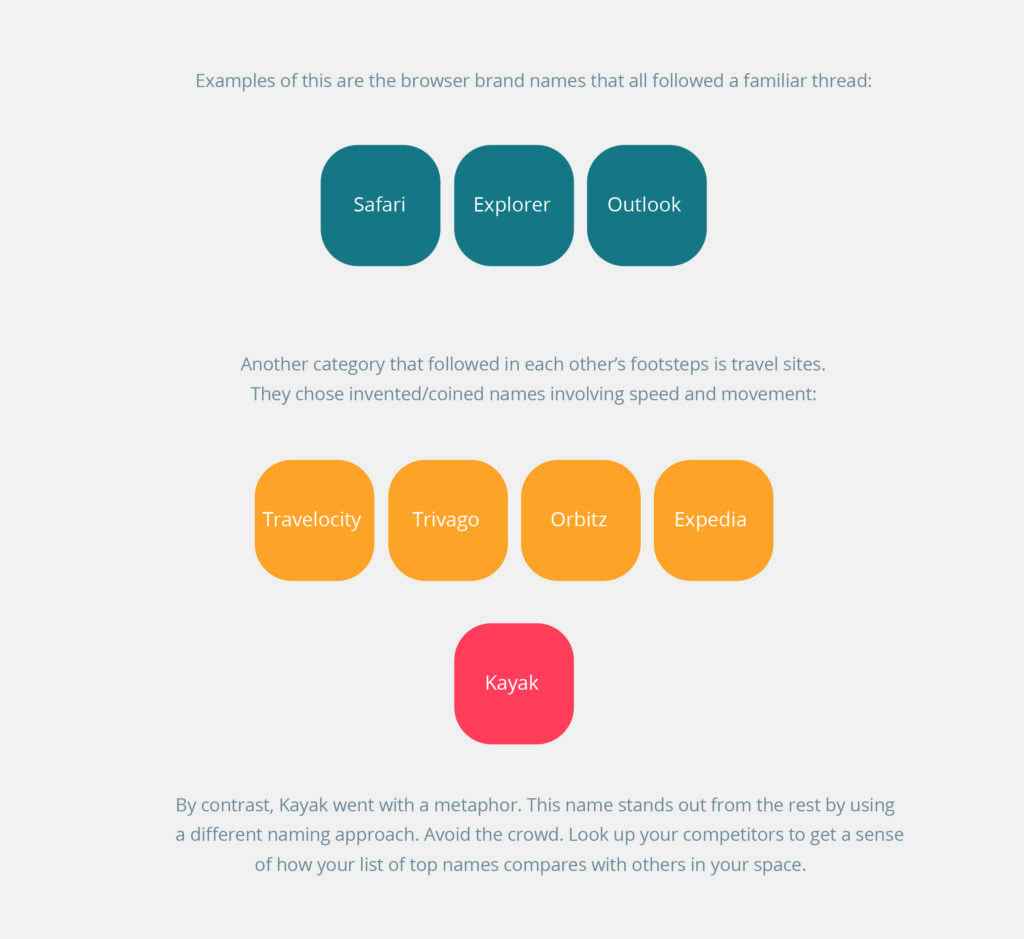
Practice introducing yourself using the name
The most pragmatic test of a name is simply using it in real-world applications. Run through a typical introduction of yourself using the company name. Then imagine how the conversation would flow. Notice how the name rolls off your tongue and how you feel when you say it. What would be the first logical question or topic that would pop up using that name? Is that where you want to start the conversation?
Hint: a good name segues easily and effortlessly to your pivot point, your reason for being. I sometimes refer to this as “one putting the name.” That’s to say, it should just take one to two short sentences to get from the name to the ah-ha! of your brand magic. We named one Florida-based business ParkPlace, which only made more sense when followed with the tagline “The ultimate garage space!” So think of names like outfits: when you have several that fit you nicely, choose the one that makes you feel your best
Create visual-contextual support
Now that you’ve tried out the name in conversation, try placing the name along with a temporary logo on an assortment of marketing pieces. For example, have the name placed on a business card, letterhead, the side of a truck, a car wrap, a billboard, a trade show display, a cup, etc. Most good naming firms or brand designers have the capability to place names in context to aid in decision-making. If a picture is worth a thousand words, visual context, as well as speaking it, can make all the difference.
For larger projects, conduct name validation research
Not all projects require this. But if this is a naming project by committee, having a third party panel of customers, potential customers & vendors participate in an evaluation and ranking process can help achieve consensus. This type of research is not cheap, but it can make all the difference when you have C-level leadership, sales, marketing & operations all weighing in.
Be sure to ask questions that align with your brand criteria. For example, “On a scale of 1 to 10, which of these names best communicates ____.” In fact, the brand criteria you first created should form the basis of any name validation research. Avoid obvious questions that would favor literal or descriptive names, like “Does The Naming Company make you think of company naming?” This may sound laughable, but your goal in deciding how to come up with a brand name is to create a unique identity that points only to you. So ask questions that support your pivot point, brand criteria & unique value proposition.

Final Thoughts on How to Come Up With a Brand Name
In addition to the actual naming, most brand name development projects require a good amount of logistical juggling. This includes pricing, process, and timelines. These are the most common questions I hear from startups, entrepreneurs, and product developers looking to come up with a brand name. Here are our recommendations:
Allow enough time to do the job correctly.
Planning out your name requires time for proper vetting and evaluation. For startups and entrepreneurs with just one or two decision-makers, this may only require a month or two. However, just because you can make a quick decision doesn’t mean you should. Take your time in developing a name using these best practices. It’ll save you big in the long haul.
For midsize companies, established companies that are looking to rebrand, or firms with layers of decision-makers and stakeholders, the process can often take six to nine months to properly vet, execute, and implement. The actual naming portion of the project typically takes about one third to one half the total time. The logo design, collateral design, social media setup, website design or redesign, and other implementation items take up the majority of the project. Plan accordingly; don’t rush.
Allow for a sufficient budget to get the job done.
Naming a new company, product or service requires time and/or money. The unseen expense? Human capital in the form of brainstorming hours that go into following the above steps to arrive at a great name. We have clients that spent nine months in meetings trying to figure out how to come up with a brand name. Yikes!
Some of the obvious expenses include trademark, filings, signage, and transition costs. It’s important to get it done right the first time to avoid doing it again. If you go it alone, follow the steps as we’ve outlined them. Be as informed as possible to come out with a quality result. Creating a brand name internally will mainly cost staff time and collateral/signage expenses. It’ll also take your staff off existing work. Additionally, they may not be the most qualified to do name creation, domain searches, and trademark research.
Consider hiring a qualified brand naming agency.
The cost of developing a brand name using an outside firm can be more easily quantified. Fees generally run from $8,000 to $12,000 on the lower end, say for a startup with basic needs. Fees can run upwards of $50,000 or more for managing and facilitating the branding process from start to finish with all the “goodies.” The goodies being establishing brand criteria, researching names, creating the brand story, and contextual visual support, logo creation, conducting meetings, building consensus, acquiring domain names, trademark, etc.
If you hire a qualified naming company, be sure they have experience in your industry or closely related field. Also, inquire about their access to matching domain names. Some firms may minimize the importance of matching .com domains, so be sure you are on the same page. Look at their references and view their client case studies. Schedule an introductory meeting to see if there’s a good fit and to provide an outline of your needs. Most legitimate naming firms will provide a detailed proposal for your review, along with a capabilities brochure that outlines their qualifications.
Summing It All Up
You can tackle your brand naming project personally, you can crowdsource it, or you can hire a professional naming firm. No matter how you do it, a solid brand name is foundational to the success and continued growth of any business, product, or service. A good brand name doesn’t only attract attention, it communicates your core message and builds actual equity in your business for years to come. Unlike last names, acronyms, and geographically-defined brands, your new brand will highlight your purpose, mission & passion in ways that connect with potential customers. If done right, you’ll have a clear, compelling, and consistent brand that remains relevant, timeless & scalable.
If you found this article helpful, please feel free to share and let us know how you did. If you need more help or resources on how to come up with a brand name, or if you’re looking for branding assistance, contact us at info@tungstenbranding.com.
BY Phil Davis
Brand Naming Expert
With over twenty-five years of company naming and branding expertise, Tungsten founder Phil Davis is a marketing and advertising veteran, having personally named over 250 companies, products and services worldwide. As a sought-after naming expert, Phil has been quoted in The Wall Street Journal, Inc.com, Businessweek, Entrepreneur, and Newsday.

